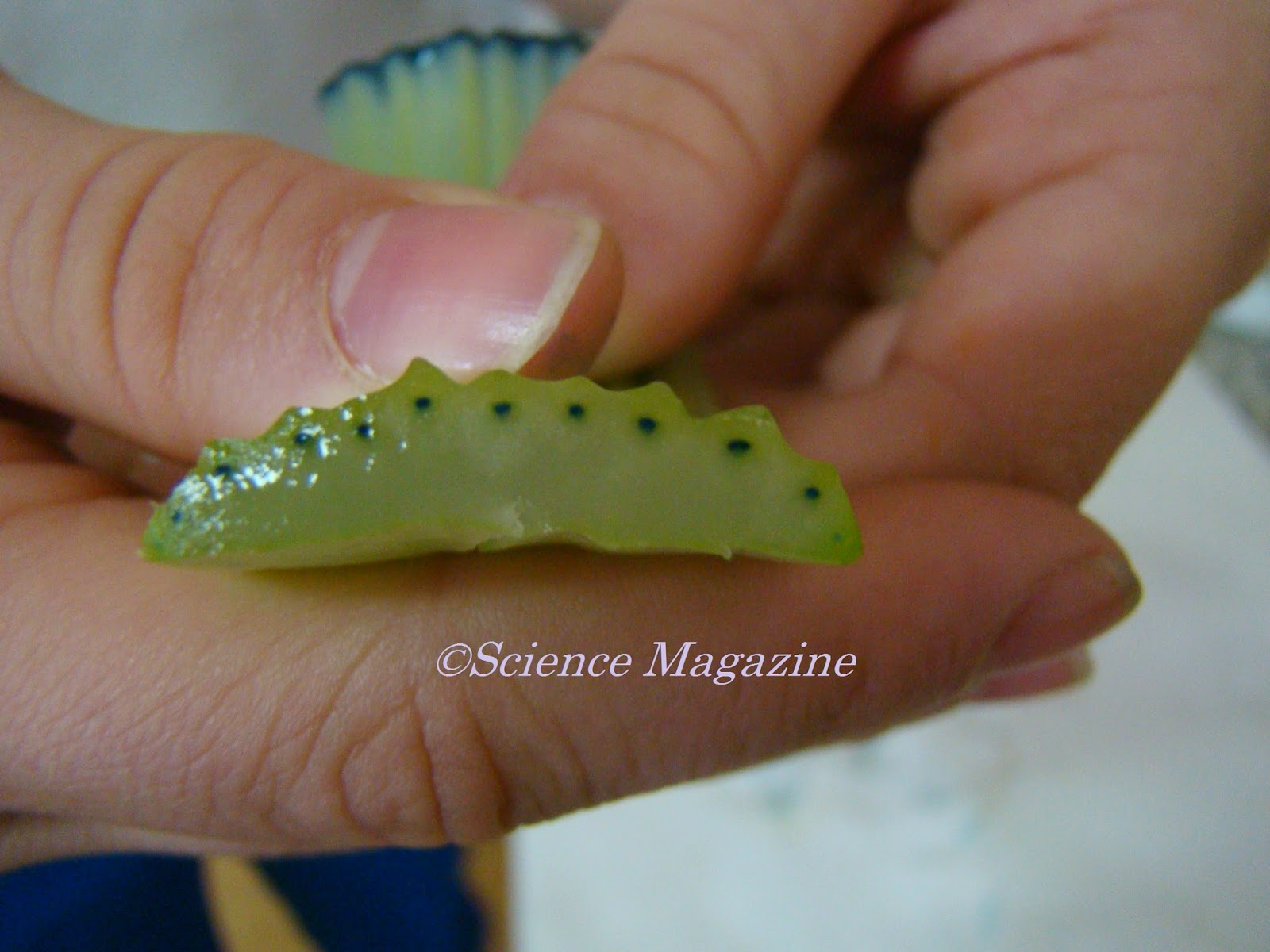Plants absorb water and mineral salts through xylem vessels. After photosynthesis occurs in the leaves the elaborated sap is transported to other parts of the plant through phloem vessels.
We did an experiment to see how raw sap goes up the stem. We had various hypothesis, one was that the raw sap went up the whole stem, evenly. Others thought that the water went up specific tubes designed for this purpose, but we wanted to know where these tubes are located? Some thought there was probably only one in the centre, others,that there could be more than one and many ideas of the possible distribution of these vessels in the stem arose.
We used celery for this experiment. We put the stems in water and blue ink. After a few hours we could easily see the xylem vessels. In this case, we saw that there are many xylem vessels and they have a linear distribution on one side of the stem.
We cut the top of the stem to see them better and represented them in our experiment books.
Here are some photos of the experiment.

























